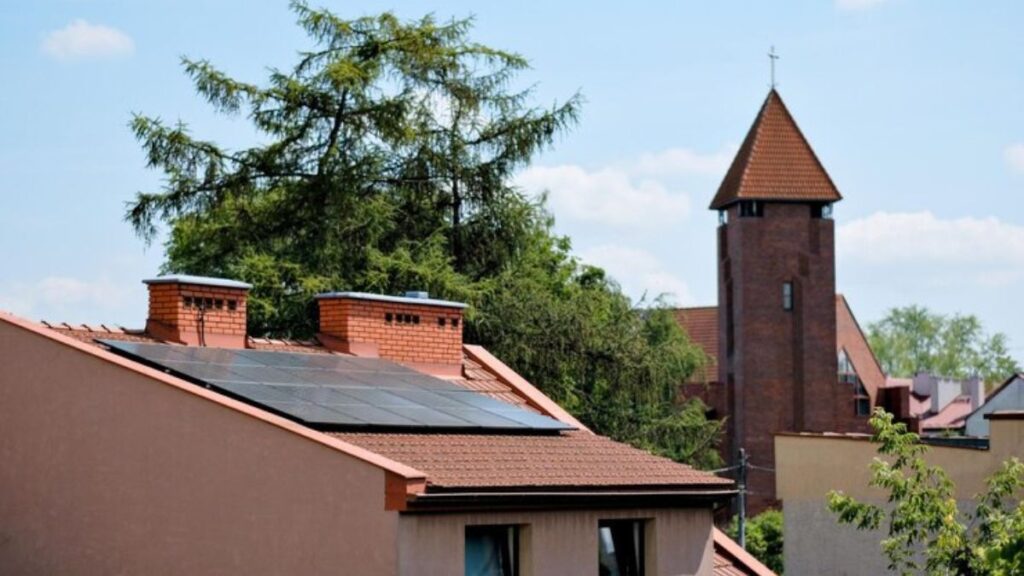Installing solar panels is a smart, sustainable choice for homeowners, but the effectiveness of these systems largely depends on the structure and features of the roof they’re mounted on. Certain roof characteristics enhance solar energy efficiency, maximizing the amount of energy generated and optimizing return on investment. Here are six essential features that make roofs more conducive to supporting solar energy.
1. Choosing the Right Roofing Material
The type of roofing material is a critical factor in determining how well your roof can support solar panels. Durable materials such as metal, composite shingles, or tiles are generally preferred for solar installations because they can withstand the added weight and protect the roof from potential damage. Consulting professionals who provide roofing services in Sun City Center, for example, can help you choose the right materials that complement both your solar goals and the local climate. By working with roofing experts, you ensure that your roof material is durable, compatible with solar panel mounting, and capable of providing a solid foundation for your solar system.
2. Optimal Roof Slope for Sun Exposure
The angle or slope of the roof affects how much sunlight the solar panels receive, directly impacting their efficiency. Generally, roofs with a slope between 15 and 40 degrees are ideal for capturing solar energy. A slope in this range allows solar panels to receive optimal sunlight throughout the day, especially in regions with high sun exposure. If your roof’s slope doesn’t naturally fit this angle, professional installers may use racking systems to adjust the panels’ angle, allowing for maximum energy production.
3. Adequate Roof Space for Panel Placement
The available roof space is another crucial feature when planning for solar panels. Roofs with minimal obstructions, like chimneys, skylights, or vents, provide a more expansive area for panel placement, which is essential for maximizing energy capture. Larger, unobstructed roof spaces allow for a more efficient layout of panels, ensuring they are positioned to receive full sunlight without being shaded by nearby elements. Homeowners with ample roof space can also install more panels if they wish, allowing for greater energy output and potentially reducing their dependence on traditional energy sources.
4. Roof Orientation for Maximum Sunlight
The orientation of the roof—essentially, which direction it faces—is critical in determining solar panel effectiveness. In most cases, south-facing roofs are considered ideal in the northern hemisphere, as they receive the most consistent sunlight throughout the day. However, if your roof doesn’t face south, west-facing orientations can still capture adequate sunlight, especially in the late afternoon. Understanding the orientation of your roof and its sun exposure can help you and your installer choose the optimal layout and angle for panels, ensuring they capture as much energy as possible.
5. Strong Structural Integrity to Support Panel Weight
Solar panels add weight to the roof, which means it needs to be structurally sound to support this additional load. Roofs that are older or already experiencing structural issues may need reinforcement before solar panel installation. Consulting with a roofing specialist to assess the roof’s structural integrity is a wise step to ensure safety and longevity. Roofs made from robust materials with good foundational support can handle the weight of panels without compromising durability, reducing the need for frequent repairs or replacements.
6. Efficient Roof Ventilation for Temperature Control
Efficient roof ventilation plays a vital role in supporting solar panel efficiency and prolonging the lifespan of both the roof and the solar system. Solar panels can increase the roof’s temperature, especially in sunny regions, as they absorb sunlight throughout the day. Without proper ventilation, this added heat can transfer into the attic or living spaces, raising indoor temperatures and increasing cooling costs. A well-ventilated roof, however, helps regulate this heat buildup by allowing hot air to escape, preventing excess heat from accumulating under the panels and keeping the roof structure cooler.
Effective ventilation not only helps control temperature but also prevents issues like moisture buildup, which can lead to mold, mildew, and wood rot. These issues are more common in improperly ventilated roofs, where trapped moisture causes long-term damage to roofing materials. With good airflow, the risk of condensation and moisture-related problems is significantly reduced, protecting the integrity of the roof and maintaining a stable foundation for panel installation.
A roof that supports solar energy efficiency combines durable materials, optimal slope, ample space, ideal orientation, strong structural integrity, and effective ventilation. By focusing on these features, homeowners can ensure their roof not only supports solar panels but also maximizes energy production, providing a reliable foundation for years to come. Consulting with roofing experts and solar professionals will help create a seamless integration, transforming your roof into an energy-efficient, sustainable asset for your home.







